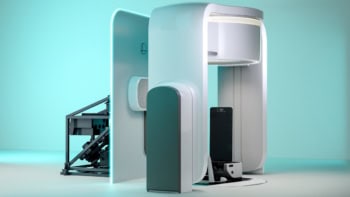Physicists have made water droplets emit white light for the first time using laser pulses. Jean-Pierre Wolf of the University of Lyon 1 in France and colleagues used femtosecond pulses to create nanosized regions of plasma inside the spherical droplets, and this plasma gets so hot that it emits white light. Wolf says that the achievement could lead to a new technique for monitoring the composition of clouds and biological pollutants in the atmosphere (C Favre et al 2002 Phys. Rev. Lett. 89 035005).

When a high-energy laser hits certain substances, their atoms are ionized and heated into a plasma in a process known as laser-induced breakdown. After the laser is switched off, the electrons and ions recombine and emit their excess energy as light. Since every substance emits a characteristic spectrum, this effect is widely used to determine the composition of materials.
But this method has not been used to detect the presence of chemicals in water vapour because physicists have been unable to make water emit light. Previous attempts to do this – which were based on vessels filled with water – failed because the laser pulses used did not make the plasma hot enough to emit light in the visible part of the spectrum. But now the Lyon team has succeeded by exploiting the spherical shape of droplets of water.
Wolf and co-workers blasted the droplets with pulses from a titanium-sapphire laser lasting just 120 femtoseconds. Crucially, the pulses do not deform the spherical shape, which means that the curved back surface of the droplet focuses the incoming pulse back into the droplet. The researchers say that the intensity of the light in the focus of a 50 µm droplet is boosted by a factor of about 100 compared with the original laser pulse. This creates a region of plasma just nanometres across, which is hot enough to emit white light as it relaxes back to its ground state.
The researchers found that most of this light was emitted in the ‘backward’ direction – that is, in the direction from which the laser pulse arrived. “This is exactly what you need to measure the composition of aerosols remotely,” Wolf told PhysicsWeb. The team also measured the spectral characteristics of the light at different temperatures and found that the water droplets emitted a spectrum of light very similar to that of a perfect black body.



